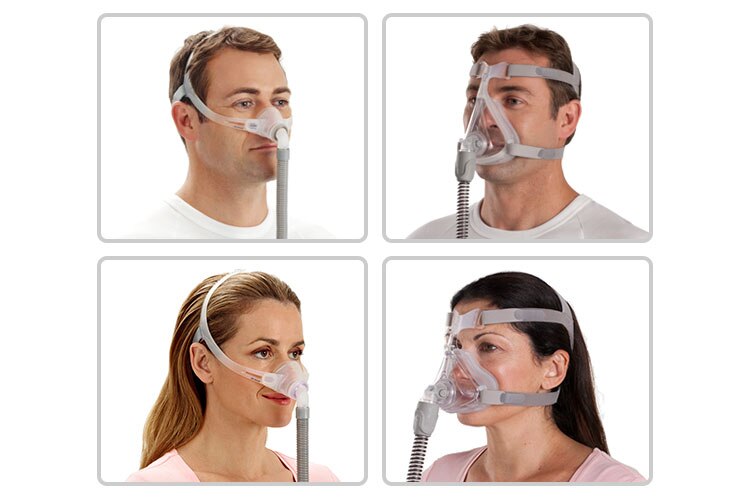Different types of CPAP Interfaces are available for those diagnosed with sleep apnea. In our last blog post, we explored the basics of what CPAP is and the many benefits it offers to sleep apnea patients, from keeping your airway open during sleep to the reduction of snoring and other apnea symptoms like fatigue and daytime drowsiness.
However, the extent to which CPAP will work for you, personally, depends a lot on what type of CPAP Interface your doctor prescribes for you. The CPAP Interface is an important part of your overall CPAP therapy, delivering the air from the CPAP machine to your nose and mouth. So, as you might guess, your CPAP Interface should be as comfortable as possible, and offer a complete seal around your nose and/or mouth (without leaving marks on your face or irritating your skin).
Luckily, many of the CPAP Interfaces offered today are designed to do just that – provide a great night’s sleep without causing discomfort or irritation. Let’s explore what sets these different types of CPAP Interfaces apart from each other, and look at the advantages presented by each group of Interfaces.
What are the different types of CPAP Interfaces available for sleep apnea patients?
There are three main types of CPAP Interfaces, and they’re generally available in all sizes. Some manufacturers like ResMed also offer “For Her” versions of these Interfaces, designed specifically for the contours of a woman’s head and face.
Full face Interfaces cover your nose and your mouth;
Nasal Interfaces fit over your nose only, offering a lighter fit than full face Interfaces; and
Nasal pillow Interfaces are even more lightweight and minimal than nasal Interfaces, offering a high level of openness and visibility.
Based on these descriptions, it may seem obvious that you’d prefer a lighter Interface over a heavier one, or a smaller Interface over a bigger one. But there are other factors to consider. For example, Interfaces that cover more of your face can sometimes offer a better seal against leaking, leading to improved therapy. Likewise, if you have facial hair, you may find that you need a larger Interface to get a better seal. Or, if you have claustrophobia, it’s likely that a smaller Interface will feel more comfortable.
Despite a slightly greater weight, you may simply find that full-face Interfaces feel more comfortable – it often comes down to personal preference, and how a specific Interface style will fit over the unique contours of your face. In any case, your doctor can help you try on a number of Interfaces and determine which of them offers the best, most comfortable fit for you.
And this is important! If you’re not comfortable with your CPAP Interface, there’s a tendency to “forget” to wear it some nights, or to take it off halfway through the night because it doesn’t feel comfortable – sometimes, you don’t even realize you’ve done this until you wake up the next morning!
After all, if you’re not wearing your CPAP Interface regularly, you’re not getting the full level of sleep apnea treatment, leaving you in a similar situation as before you were diagnosed – you’re likely to be drowsy and lack energy throughout the day, not to mention at risk for many other potential dangers of sleep apnea.
-ResMed

